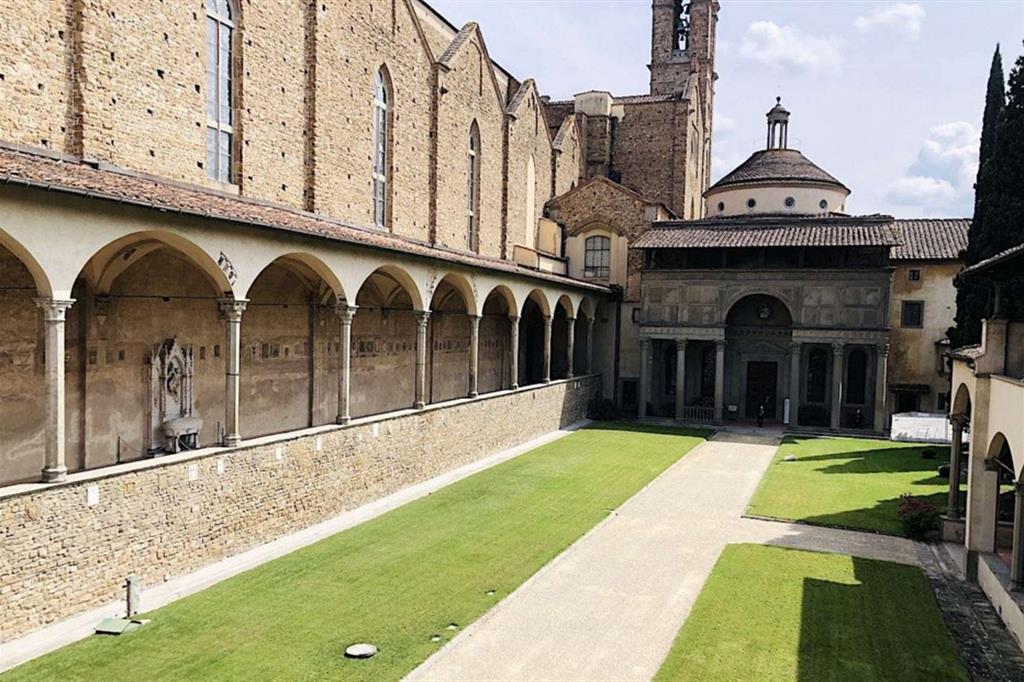For the Florentines the Basilica of Santa Croce, located in the homonymous square, is much more than a monument of extreme beauty and cultural richness, much more than a place of worship, it is the place where true Florentineness is represented, the nerve center of belonging to the city. Whether for the statue of the Supreme Poet, Dante Alighieri, which stands next to the church, or for the numerous famous people buried within the Gothic walls, or for the liturgy to which every citizen participates every year with fervor, the Calcio Storico Fiorentino, Santa Croce rivals, in the hearts of the Florentines, with Palazzo Vecchio as a symbol of the city.
The basilica, an Italian national monument, is one of the largest Franciscan churches and one of the greatest achievements of the Gothic style in Italy. Its construction took many years: already in 1211 St. Francis of Assisi had been visiting the city, and in 1228 a group of his followers settled in the city and founded an oratory, which was renovated in 1252. In 1294, given the insufficiency of the building to accommodate all the faithful, it was decided to demolish it and build a new church from scratch, not without some controversy between those who wanted a poor building, as required by the rule, and a larger and richer one. It seems that the project for the new building was developed by the architect Arnolfo di Cambio, already struggling with many projects of the municipality. Although there are no certain data, the completion of the work is attested in 1385; However, the church was consecrated during the Epiphany of 1443.
The Basilica of Santa Croce is composed of three naves divided by two rows of pillars with an octagonal base; it has the shape of an Egyptian cross and a particularly large transept, part of the work of an impressive internal renovation of which Giorgio Vasari took care in 1556. One of the last, important works is that of the façade: it remained incomplete until 1863, when it finished its construction, by the architect Niccolò Matas.
The paintings of the Basilica of Santa Croce

Inside there are several finely decorated chapels, the most famous and important are the Peruzzi Chapel and the Bardi Chapel, both frescoed by Giotto between 1320 and 1325.
In the Peruzzi Chapel Giotto depicted the Stories of St. John the Baptist and the Stories of St. John the Evangelist, while in the Bardi Chapel he staged the Stories of St. Francis. These frescoes are a precious heritage of Italian art and a testamentary legacy of the master, who executed them in old age; they are real stories told through images: at a time when the Mass was in Latin, therefore far from the popular vulgate, images represented a precious tool to convey the Holy Scriptures even to those who did not have the means to understand them during the celebrations.
Giotto's work is very fine, rich in architectural details, but what is most striking is the dramatic rendering of the narration, underlined by the expressiveness of the faces of the characters.
The burials of the Basilica of Santa Croce

Another aspect that contributes to making the Basilica of Santa Croce a precious treasure chest and a jewel of the city, is the amount of important burials that are kept there. The imposing Gothic walls are in fact the home of the eternal rest of many central figures of Italian culture (all, except one: we remember that the Supreme Poet left the city as an exile and that he lies buried in Ravenna, while inside the Basilica there is his cenotaph).
Michelangelo, Machiavelli, Galileo, the greatest lie within the walls of what is a real Pantheon. Not only that, we also find Ugo Foscolo, Gioacchino Rossini, Leon Battista Alberti, Vittorio Alfieri...
The Basilica of Santa Croce is a wonderful place that deserves a visit (which we remember to be free for residents of the Municipality of Florence), a place so rich in history and beauty that it is not possible to summarize in a few pages, but which must be admired live.
Image sources: VisitaFirenzein3giorni, Guidaturistica-Michelebusillo, Avvenire










 Map
Map